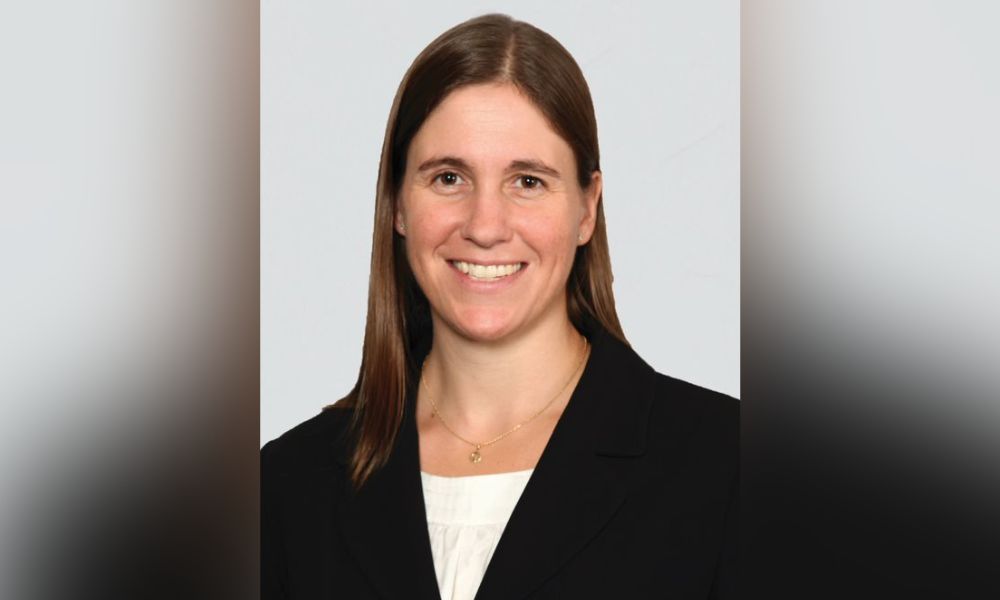
A confluence of factors has made the trademarks processor one of the most delayed, say lawyers

A significant overhaul of the Trademarks Act, which Canada implemented less than a year before the pandemic hit, has led to a massive backlog in trademark examinations.
“I believe it’s the slowest trademarks office in the world, by far,” says Philip Lapin, a lawyer, patent and trademark agent, and partner at Smart & Biggar LLP.

Philip Lapin
At the time of writing, the delay in trademark examinations was 43 months for applications not using pre-approved terms from the Canadian Intellectual Property Office’s (CIPO’s) Goods and Services Manual, 21 months for applications using the pre-approved list, and 16 months for international applications.
Historically, the time between filing an application and having the application examined was between six months and a year, says Gary Daniel, counsel at Deeth Williams Wall, whose intellectual property law practice includes trademarks and copyright. “Still not great. But, from a business cycle point of view, that was enough.”
The backlog is partly due to an upsurge in trademark applications.
The 68,277 trademark applications CIPO received in 2019 represented an eight-percent increase from 2018 and a 51-percent increase from 2010, says Justin Simard, a spokesperson for Innovation, Science and Economic Development Canada (ISED). CIPO is a special operating agency within ISED.
He says the number of trademark applications has continued to rise, with 76,168 filed in fiscal year 2020/21 and 79,808 in 2021/22. CIPO has hired 102 new trademark examiners to deal with the influx since 2020.
Amendments to the Trademarks Act came into force on June 17, 2019, and resulted in changes to the trademark examination process. The amendments included the accession to three international intellectual property treaties. Under the Madrid Protocol, CIPO now accepts foreign filings from the International Bureau of the World Intellectual Property Association. And the Nice Agreement requires trademark applicants to classify all goods and services according to an international classification system.
Signing on to the Madrid Protocol meant anyone in the world who wanted to register their mark could do so in Canada. This led to a flood of applications hitting CIPO in a short period, says Meghan Dillon, a partner, lawyer, and registered trademark agent at Bereskin & Parr LLP.

Meghan Dillon
“Everybody knew that when Canada joined the Madrid Protocol, that would increase the number of applications, but nobody anticipated how popular Canada would be as a place to protect trademarks,” says Lapin. “Last year, for example, Canada was the fifth-most-popular jurisdiction in the world for companies to apply to register their marks through the Madrid Protocol. Canada just wasn’t equipped to deal with this flood of new applications.”
The Nice Agreement establishes a classification system comprising 34 classes of goods and 11 classes of services. CIPO’s Goods and Services Manual now includes these classes.
The new international classification requirements also cause delays for applicants and examiners, says Lapin. These delays are partly because Canada’s trademarks office is one of the most finicky in the world for describing goods and services.
Non-residents own most trademarks in Canada. He says when foreign applicants use broader descriptions, which they may have successfully registered in dozens of other jurisdictions, the trademarks office often rejects them. “A lot of applicants in other countries have found this very frustrating,” Lapin says. “It causes delays at the trademarks office because they are objecting, and it can significantly add to the costs for applicants because they spend so much time going back and forth with us and the trademarks office to describe their goods and services very specifically – which they haven’t had to do anywhere else in the world. That’s another factor adding to both costs and frustration and delays.”
Two other aspects of the 2019 amendments adding to the delays are the requirement that a mark has “some degree of inherent distinctiveness,” and the elimination of the use requirement.
Daniel Anthony, a lawyer, patent and trademark agent, and counsel at Smart & Biggar LLP, says the trademark office’s aggressive application of the non-distinctive objection is another cause of backlogs.
Lapin says there is confusion and no relevant case law around the meaning of inherent distinctiveness. When examiners began objecting to applications because marks lacked inherent distinctiveness, he says, this provoked a “tremendous backlash” from trademark lawyers because case law does not back the objections.
“Because they were raising so many objections, a huge percentage of applications were now being thrown back at applicants. Then applicants had to respond,” says Lapin. “Now the examiners not only had more applications that they had to deal with, but they had more objections that they were raising, and more responses to objections, and they had the irate trademark community complaining that these objections were without foundation.”
Lapin says the ordeal also resulted in examiner retraining, which further slowed down processing.
The elimination of the use requirement means trademark applicants do not need to show that they are using a mark to register it.
“With use no longer being a prerequisite to registration, more applications were filed,” says Dillon. “People were taking advantage of the fact that, as long as they had an intent to use in the future, they could file in Canada and get a registration without having to declare use.”
The pandemic also added to the delays, says Lapin. “The reason that was such a significant problem is because the trademarks office was, and still is, almost entirely paper-based,” he says. Because of lockdowns, no one could print and mail letters for a while. But Lapin adds that the trademarks office is currently digitizing its files, moving from regular mail to email, and expanding its online services.
All the lawyers who spoke with Canadian Lawyer noted that the trademarks office is working hard to expedite processing.
“There are huge backlogs, yes. But the trademarks office is doing everything they can to try to alleviate the situation,” says Dillon.
According to Simard, the spokesperson from ISED, the trademarks office has cut wait times down by 22 months for trademark applications comprised of goods and services selected from their pre-approved list, which they have expanded from 62,457 to 122,843 entries.
Since April, CIPO has pre-assessed goods, services, and Nice Classification information in all unexamined trademark applications and sent the results to applicants. The office has issued 128,009 letters and is now pre-assessing applications within five business days of filing, says Simard.
He says 93 percent of CIPO correspondence was in paper form before the pandemic, but now it is at eight percent. CIPO says in 2020 it launched a “new electronic General Correspondence online service” and this year it launched “enhanced Trademark E-Services,” which includes new online services and “has automated a number of transactions.”
“Since the implementation of these measures, CIPO has observed positive gains, including an increase of 82 percent in the number of examiner first reports issued and an increase of 54 percent in trademark approvals for the fiscal year 2021/22, compared to the previous year,” says Simard. “The office has also seen an increase in registrations for the fiscal year 2021/22 by 28 percent compared to the previous year.”
Applications not using pre-approved terms from CIPO’s Good and Services Manual: 43 months
Applications using the pre-approved list: 21 months
International applications: 16 months
2019: 68,277 (eight-percent increase from 2018 and 51-percent increase from 2010)
Fiscal year 2020–21: 76,168
Fiscal year 2021–22: 79,808